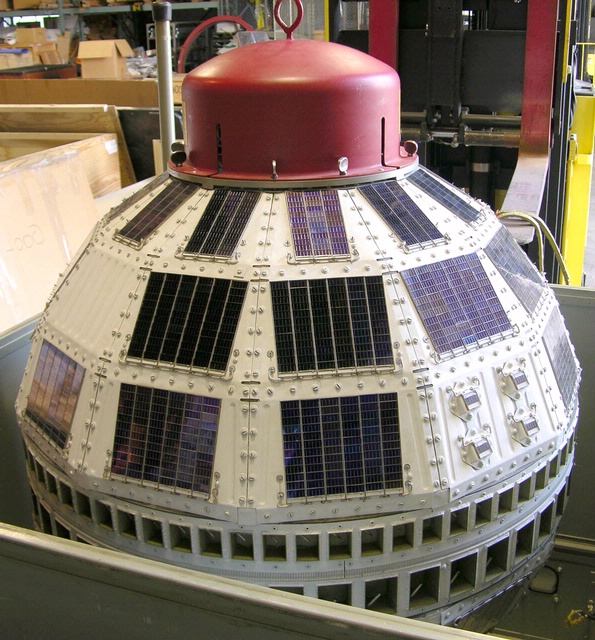National Air and Space Museum Program Will Recognize Telstar and the Birth of Global Communications
Telstar, the satellite that made the world’s first transmissions of live television possible in 1962, will be the subject of a program at the Smithsonian’s National Air and Space Museum July 12. The “Telstar 50th Anniversary” symposium, which will begin at 1:30 p.m., will be presented in cooperation with the Embassy of France. It will begin with a satellite television connection to the Pleumeur-Bodou Telecommunications Museum in France commemorating the first global transmission of a television signal 50 years ago.
“It was that rarest of all television moments, the kind that compels viewers to lean forward and stare in a primal wonder and amazement at their screens” was how newscaster Walter Cronkite described a Telstar-enabled public broadcast that occurred about two weeks after the satellite’s launch and first test transmission July 10. A multinational event, the July 23 broadcast was carried by American networks CBS, NBC and ABC as well as CBC in Canada and Eurovision in Europe. The first pictures were of the Statue of Liberty and the Eiffel Tower. Although the program was to have begun with remarks by President John F. Kennedy, the talk was delayed and a baseball game between the Philadelphia Phillies and the Chicago Cubs was televised in its place.
The symposium will be presented in two parts. Secretary of the Smithsonian Wayne Clough will begin the satellite connection between the two museums. French Ambassador François Delattre and the U.S. General Consul in France, Robert Tate, will also speak.
“Live broadcast of events happening throughout the world are taken for granted today, but 50 years ago transmissions enabled by Telstar captured the attention and imaginations of people everywhere,” said Clough. “The 50th anniversary reminds us how far we have come, and how much potential there is in the new era of digital communications.”
Following the satellite connection, historians and experts from industry and government will discuss Telstar’s historical significance, its impact on commercial space endeavors and the birth of global communications. Footage from the original 1962 broadcast between France and the United States July 12 will be shown at the symposium. Concluding remarks will be delivered by State Department Assistant Secretary Kerri-Ann Jones.
Support for the program is provided by Intelsat and France Telecom-Orange. The symposium will be held in the museum’s Moving Beyond Earth gallery. Reservations are not required.
Telstar 1 launched July 10, 1962, from Cape Canaveral, Fla., and was the first privately sponsored space-faring mission. It handled a variety of transmissions, including telephone, fax, data, still pictures and television signals from several locations across the United States and Europe. The original Telstar was part of an agreement between AT&T, Bell Telephone Laboratories, NASA, the British General Post Office and the French National Post Telegraph and Telecom Office. The satellite was built at Bell Telephone Laboratories. A small model of Telstar 1 will be on display during the symposium.
More information on the program may be found on the museum’s website and blog.
The National Air and Space Museum is on the National Mall in Washington, D.C., at Sixth Street and Independence Avenue S.W. The museum’s Steven F. Udvar-Hazy Center is located in Chantilly, Va., near Washington Dulles International Airport. Both facilities are open daily from 10 a.m. until 5:30 p.m. (closed Dec. 25). Admission is free, but there is a $15 fee for parking at the Udvar-Hazy Center.
# # #
SI-319-2012

